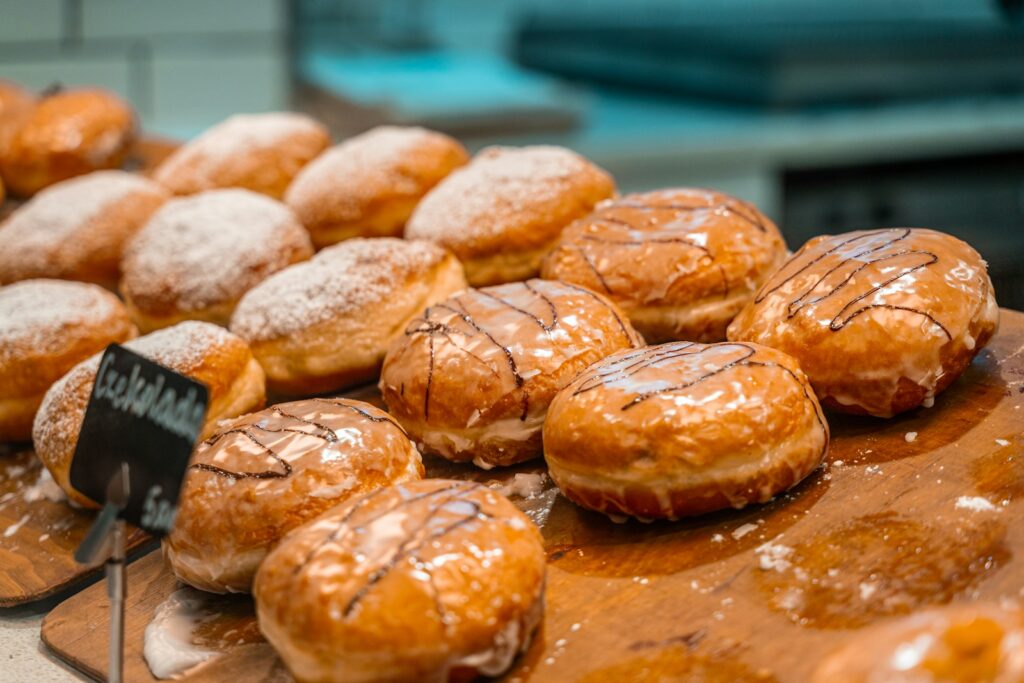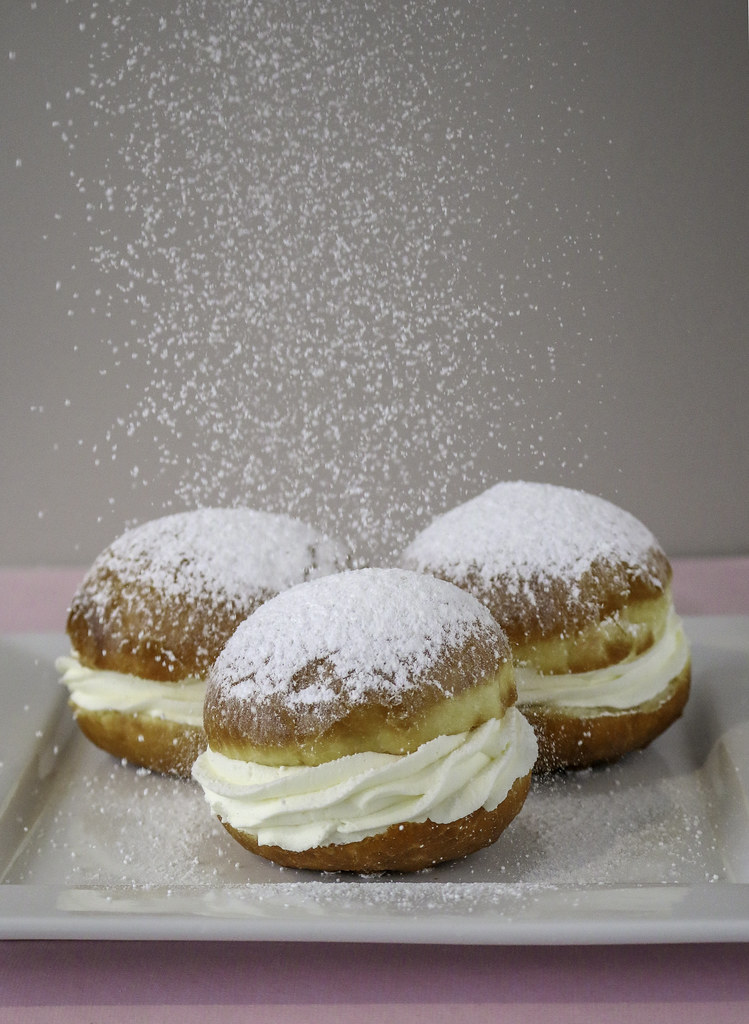Have you ever come across anything that stops you in your tracks when browsing the aisles of a grocery store? Let me tell you about the moment I learned the secret to the Polish Bavarian Crème Pączki. During a certain time of year, this unusual but very delicious pastry has caught the taste buds of many people, including mine.
Pączki: Not Your Average Doughnut
Pączki, pronounced ‘puhnch-kee,’ is far from your average doughnut. For Polish pastries, history and tradition elevate them to new heights of intrigue beyond their exquisite tastes. Pączki, a seasonal sweet delight, gleam brightly around Fat Tuesday. They are the true stars in Chicago bakeries and beyond. So, what makes them so unique?
Dobra Bielinski, proprietor of Delightful Pastries bakery in Chicago, believes that while pączki may resemble other fried pastries, they truly stand apart. Pączek dough is richer and heavier than traditional American doughnuts. But what makes them so wealthy? The dough contains yeast, eggs, milk, and a generous amount of butter, resulting in a really fulfilling and rich pastry.eggs, milk, and a lot of butter in the dough make for a real delight—satisfying and indulgent pastry.
Pączki originated in the 1700s as a way for families to consume eggs, butter, sugar, and fruit before the Lenten season. Pączki, a tradition designed to avoid consuming food during the 40-day fast, has spread beyond Poland to become a beloved tradition in communities with large Polish populations.
In Chicago, the Polish settlers left their stamp, making pączki more than a dessert. It is a yearly celebration that brings people together, regardless of their background or creed. To meet the demand for this famous dessert, bakeries all around town, from old-school Polish to mainstream supermarket shops, begin preparing weeks before Fat Tuesday. The selections are as different as they are delicious: packed with jam, cream, or custard, the delicacies demonstrate the pastry’s versatility.

Pączki’s uniqueness lies not just in its ingredients and traditions. It’s the feeling of biting into something. My first experience with pączki was from a bakery known for its delicious cookies and desserts. I tried a Bavarian cream pączek with apricot as a comparison. However, the crumb is dry and, unexpectedly, not a typical feeling. The Bavarian cream was light in flavor, and the texture was almost there to back up the point—the tiniest of variances that make Bavarian cream distinct from custard in one thing: thickened with gelatin and set with the help of whipped cream, whilst the other relies on the thickening power of egg yolks.
Other bakeries and my pączki collection are well-known for their unique interpretations of this delectable dessert. The variances varied from delicious to heavenly. One inside was soft with rich, crumbed, over-generously stuffed… Their sugar-coated, prune-filled pączek was like no other I have ever had: delightfully sweet with a really satisfying crunch. Meanwhile, those packed with cherry and lemon merely boded a sweet-tart interplay, which showed just how fantastic base pączki might be for varied flavors.
Pączki are more than just baked delicacies; they represent a celebration of culture, customs, and guilty pleasures. As Fat Tuesday comes as bread cooks prepare to serve handfuls of these grilled delights; clearly, the pączki frenzy is about more than just satisfying a sweet craving. It has to do with interacting with a rich culinary tradition, participating in a collective experience, and, of course, indulging in a little decadence before the seriousness of Loaned.
A Culinary Quest
The undertakings we have looking for extraordinary food! There’s something innately exciting about the chase after that ideal nibble—At the heart of this adventure was a drive to experience firsthand the delights of these Polish Bavarian crème pączki that had captured my imagination and taste buds. Each bakery visited offered its own unique take on this traditional treat, turning each stop into a new chapter of discovery and indulgence.
My voyage began on a fairly cold Chicago morning. The city cleaned in preparation for the impending Fat Tuesday. The streets were quieter than normal, providing a calm background for my culinary journey. My first destination was a modest, family-owned bakery nestled in one of those districts that exuded Old World charm despite the contemporary landscape. The bakery window displayed a rainbow of pączki, making my mouth wet every second.

The fragrance of fresh, sweet, baked goodies overwhelmed me from the moment I walked in. I carefully selected a pączek filled with Bavarian cream that stood out among the rest. Then I bit into it, full of expectation, and it did not disappoint. This light and airy dough made an ideal cushion for the thick, creamy filling, which was both indulgent and soothing.
Energized by my first taste of pączki perfection, I continued my search for additional pączek brilliance. Some stops were scheduled ahead of time, while others were discovered while driving. Each contributed something different to the table, albeit the majority came from familiar tastes like prune and raspberry, as well as some really innovative ones like apple and lemon.
The tales behind the pączki were what actually made this tour remarkable. I had the opportunity to speak with bakery owners, each with their unique narrative about how pączki became their signature dessert. These talks are tangents to the fabric of Chicago’s culinary culture—a patchwork of cultures and traditions that combine to produce something really unique.
Related posts:
Here’s what makes paczki different from your traditional doughnut
Paczki Day
What are paczki? A Mass. grocery store’s not



